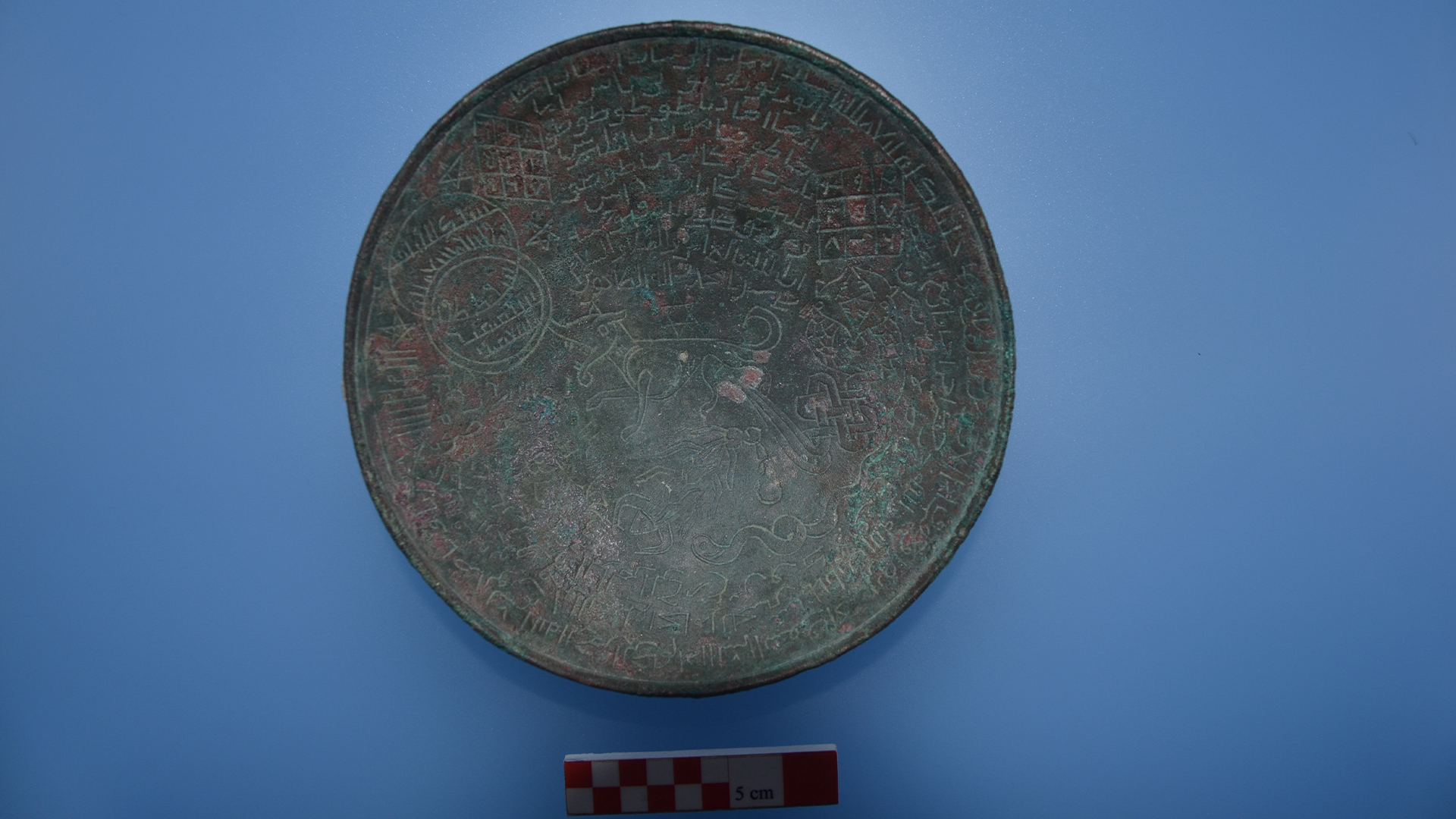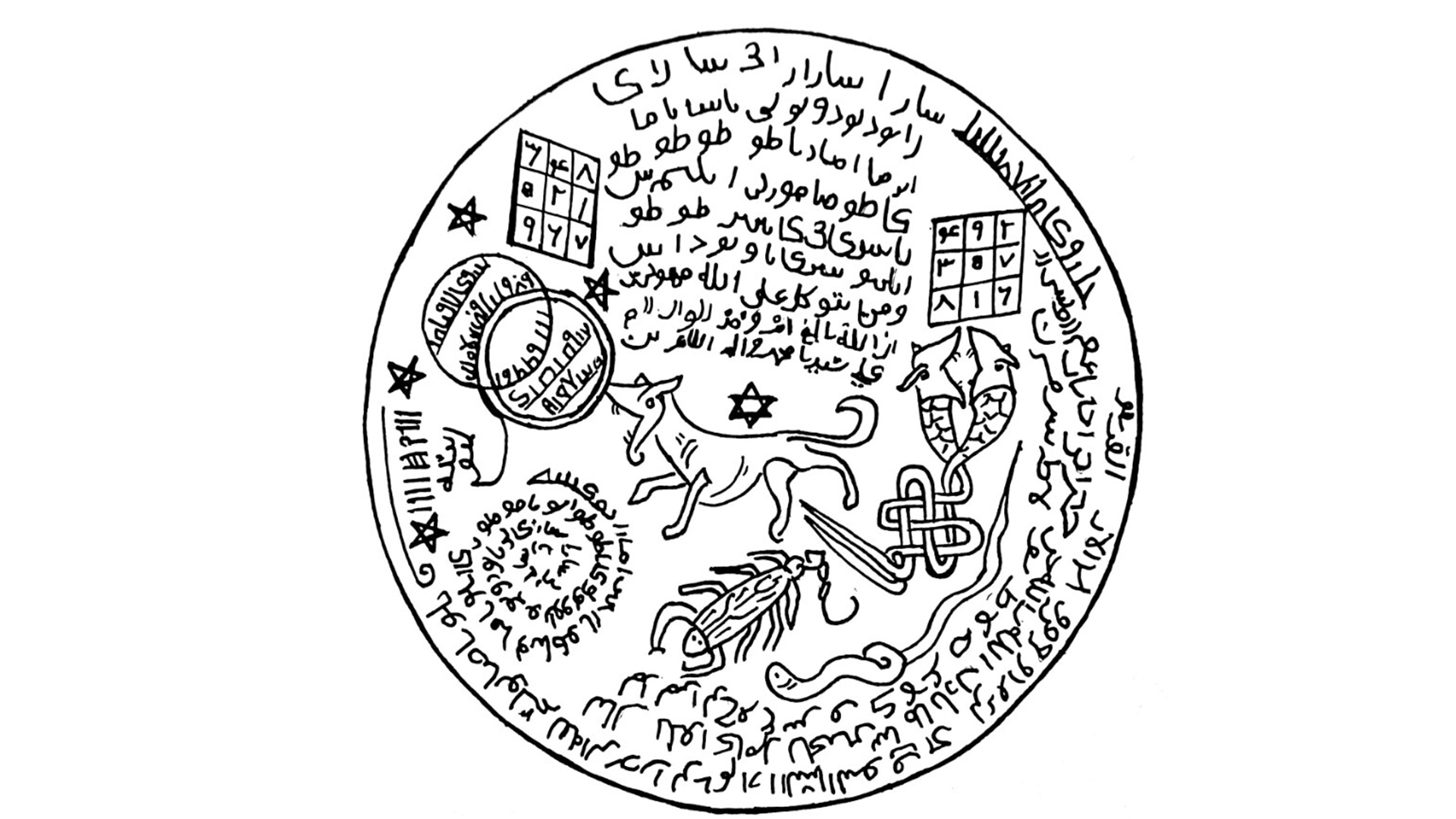800-year-old healing bowl emblazoned with double-headed dragon unearthed in Turkish castle
A "healing bowl" marked with drawings of a scorpion, dog and double-headed dragon has been unearthed in a castle in Turkey.

Archaeologists in Turkey have discovered an 800-year-old healing bowl meant to protect against animal bites during excavations in an Artuqid period castle.
The bowl was found within a terracotta water pipe at the site of Hasankeyf, an ancient settlement dating back about 12,000 years, Zekai Erdal, an archaeology professor at Mardin Artuklu University in Turkey who is leading excavations at the site, told Live Science in an email. Excavations have been carried out since 1985 and have been increasingly urgent as the construction of the Ilısu Dam has caused flooding in parts of the site.
The bowl dates to the 12th or 13th century, when the Artuqid dynasty ruled the area, Erdal said. The castle was also constructed by the Artuqid dynasty around the same time. This dynasty ruled the area around Hasankeyf for about three centuries and found themselves in conflict with Crusaders and the Byzantine Empire, according to the Metropolitan Museum of Art in New York City.
The bowl is emblazoned with images of a dog, scorpion, snake and a double-headed dragon, Edal said.

"According to these figures, the person who drinks water from the healing bowl will be protected against animal bites, or the person who drinks water from this bowl after an animal bite will be healed," Erdal said. There are also expressions and symbols on the bowl related to magic, including verses from the Quran.
The concept of the healing bowl is found in many cultures. Erdal has been doing a literature search to identify healing bowls that still exist. Aside from this one, he's found 22 examples that are largely in museums or private collections. He's also found examples on auction house websites. During the Middle Ages, healing bowls were used in parts of the Middle East. Outside of the region, Tibetans have made use of bowls for similar purposes and the Tibetan version of the bowls continues to be used in modern times.
Sign up for the Live Science daily newsletter now
Get the world’s most fascinating discoveries delivered straight to your inbox.

Owen Jarus is a regular contributor to Live Science who writes about archaeology and humans' past. He has also written for The Independent (UK), The Canadian Press (CP) and The Associated Press (AP), among others. Owen has a bachelor of arts degree from the University of Toronto and a journalism degree from Ryerson University.









